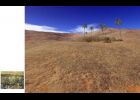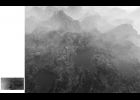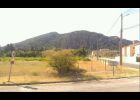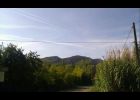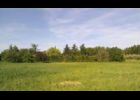Flusser Studies 14 – November 2012 / Special Issue: Landscape
Paraiso: edição revista / Von den Gärten /Outono
Horizontes da filosofia do exílio: as Américas de Horkheimer e de Flusser
This article is a comparative study between Flusser’s and Horkheimer’s philosophy of exile. Their biographies are similar: they both suffered from persecution in their countries due to the anti-semitism of the Nazi regime, and saved themselves by immigration, first to another European country and later on to the Americas. But the similarities stop here. In the United States Horkheimer recovered intellectual freedom, but the American reality only confirmed the European mind set he had left behind: the empire of instrumental reason and the pervading presence of barbarism. Flusser, on the other hand, discovered a completely new world in the Brazilian territory: different not only from a geographic point of view but from a human perspective as well.
Oberflächenwissen im Untergrund. Bemerkungen zur Technizität der Landschaft
The essay explores one of the industrial foundations of modern landscape in its very materiality: the chemical industry and its main principle – catalysis. The history of this universal tool of modern chemistry makes us combine three perspectives on the concept of landscape: the planetarian perspective on the surface of the earth as landscapes of global change, the everyday perspective on the dynamics of industrial agriculture and automobile traffic, and the microperspective involving chemical agents and catalytic surfaces in industrial reactors that basically make our fertilized fields grow and our refined fuels flow. Though these topics seem far away from Flusser’s work – concepts of surface, molecular communication, and border areas as priviledged zones of productivity – they are historically and technologically relevant to Flusser’s essays on nature and culture.
Hyperbolische Tropenlandschaft. Brasilienanschichten von Simão Vasconcelos bis Vilém Flusser
The interpretation of Brazil, mainly from authors of the 20th century, like Euclides da Cunha, Claude Levi-Strauss, and Max Bense, reveal not only some common views about tropical landscapes but also the fact that the experience of the tropics seems to generate extreme positions. These descriptions of Brazilian cities and landscapes often (and we recognize this in the work of Vilém Flusser as well), end up in hyperbolical images: the symbolical (language) when confronted with the diabolical (disorder/stammering), tries to overcome the incomprehensible with hyperbolical descriptions.
Mensch oder Landschaft – was war zuerst da? Antworten aus Vilém Flussers Vogelflüge
The essay is dedicated to the relationship of nature and culture. Landscapes are formed by natural and cultural influences. Cultural influences include two components: the changes on the land made by men and the changing ideas about landscape. Landscapes are concepts; therefore they cannot exist without men. Flusser explores this theme by describing his visit to the French Jura Mountains. He outlines how, first animals and later men used the Ofenpass, a pathway in the Alps. Separated river valleys were transformed from natural areas to landscapes, which can be regarded as men’s homes.
Mapping in Flusser, Deleuze and Digital Technology
Deleuze and Guattari understood Mapping as an unfolding of becoming and an all-encompassing and connecting event. Vilém Flusser on the other hand treats mapping as a creative yet private and isolated activity. The insistence on the primacy of holistic mapping over subjective tracing in Deleuze’s and Guattari’s account bears the danger of cutting off the subject from a physical environment, the possible results of which are illustrated in Flusser’s essay “My Atlas”: the loss or radical reduction of sensual impressions as well as the end of shared intersubjective experience. I compare both accounts of mapping to underline the active and passive implications of embodied experience in a physical environment. Building on these results I draw out the difficulties individuals are facing when engaging with digital technology, in particular Google Maps.
4. Mein Atlas / My Atlas / Mon Atlas / Meu Atlas
Vom „Chaos der Farben“ zum blot. Konzepte von Bilderfindung und Gedächtnis bei Alexander Cozens und Samuel van Hoogstraten
This article discusses aspects of artistic inventio in landscape painting in the 17th and 18th centuries with a special interest in the changing role of the cultural understanding of memory and its growing influence on art theory. The main focus is on two discourses about artistic invention –an artistic anecdote by the Dutch painter and theorist Samuel van Hoogstraten (1627–1678) that is part of his treatise on painting Inleyding tot de hooge schoole der schilderkonst (1678), and the blotting system, which the English landscape painter Alexander Cozens (1717–1786) presents in New Method of Assisting the Invention in Drawing Original Compositions of Landscape (1785/86). The article argues that while the earlier text already reflects an increasing awareness of a fundamental shift in traditional concepts of human memory, the latter one finally demonstrates new paradigms of scientific systematization, which gave rise to a different model of creative imagination.
Landschaftsgeschichte – Landschaftstheorie – Landschaftswandel: Konzeptionen und Fallstudien
In various disciplines including landscape research, the term landscape is controversial and is also newly conceptualized and theorized. Over the course of the 20th century, approaches ranged from the classical modernist concept of landscape to the postmodern and more particularized landscape approach. The new, particularized concept of landscape rejects both the ontologically frame of cultural landscape and the classical notion of self-contained homogeneous spaces. This article examines current perspectives in landscape research by focusing upon the example of the coastal landscape of the Baltic Sea and North Sea, which deals with the Graswarder Peninsula (near Heiligenhafen, Germany) and the changing of sea dykes. Coastal landscape is here understood not as a description of idealized nature, but as an analysis of the sometimes very rapid changes due to economic and socio-cultural settings.
Stimmungsräume. Zur Aktualität eines Landschaftskonzeptes der Aufklärung
The age of Enlightenment produced a concept of landscape gardens as spaces of emotion. Through the example of one of the earliest English landscape gardens in Germany, the Hinübersche Garten near Hanover, this essay explores a specific mode of perception: a garden walk in which the visitor should experience a sequence of different emotions evoked by landscape design.
In contemporary site-specific art, we find similar strategies aiming at transforming the spectator into an emotionally involved participant. Examples from the documenta 13 exhibition (Kassel 2012) are the projects “The Path” and the performative radio play “50 Aktenkilometer/50 Kilometres of Files”, which took place in the public space of Berlin. As in the 18th century, the creation of spaces of emotion is based on a desire for reality — under different conditions.
Landschaftskunde und Wirtschaftsgeographie: Akademischer Antisemitismus im Werk Siegfried Passarges in den 1920er und 1930er Jahren
Historians have by and large neglected the work of the Hamburg-based academic Siegfried Passarge (1867–1958) on regional geography, a clear example of a volkish-national world-centered view on culturally homogenous Bodenständigkeit—“attachment to the soil”—and collective rootedness. Passarge’s “territorial” argument was not just articulated in the Nazi years but reflected a German geopolitical tradition of the 1920s dating back to the nineteenth century and whose well known representatives were Karl Haushofer, Otto Maull, Hugo Hassinger, and Friedrich Ratzel. The ideology of character-stamping “landscape” not only involved the glorification of ur-agrarian life and country people, but the corresponding demonization of the big cities. At the same time, as a scrutiny of Passarge’s texts reveals, this ideology was radically antisemitic. My discussion addresses this mentality that became hegemonic in Germany in the 1930s and early 1940s; a mentality—ideological tenets, traditions, and consequences—against which Vilém Flusser engaged in a life-long struggle.
Translating Space: On Rivers, Seas, Archipelagos and Straits
This paper explores possible convergences between translation and geography focusing on a series of spatial metaphors that try to break free from the simple idea of separation and opposition. Languages are viewed not as radically differing self-contained cultural continents existing on separate shores or riverbanks but as moving and constantly intermingling currents and heterogeneous interlinked archipelagos. Instead of the metaphor of the river that has to be crossed in the course of translation, the paper focuses above all on the metaphor of the strait which stresses the very difficulties of translation highlighting the absence of any easy binary division.
Staging the Driving Experience: Parkways in Germany and the United States
What do we see when we drive? The view from the road has been one of the important ways of grasping, understanding, and changing landscapes in the 20th century. Landscape architects, planners, and automotive enthusiasts tried to adapt the automobile to the landscapes surrounding it, and also altered landscapes to make them more amenable to the automobile. The paper focuses on efforts in the United States and Germany to build roads with the prime goal of providing pleasant landscape vistas for drivers and passengers. The politics of designing and building these roads were as contested as the ways in which drivers appropriated them.
Flusser in Robion
Robion, a small town in the Provence of southeastern France, was the second exile of Vilém Flusser and his wife. They lived there from the early 70s until his death in the early 90s, and after living for a long period in the city of São Paulo. This new but well known cultural landscape attracted a lot of philosophers, writers and artist and represented for Flusser a so called anti-Brazil, some kind of paradise in a strait opposition to the “desert” landscapes of Brazil. Here he found a prosperous landscape where several points of his thinking where connected in natural and cultural ways.
